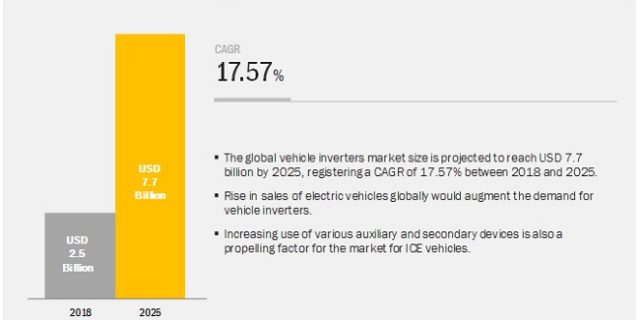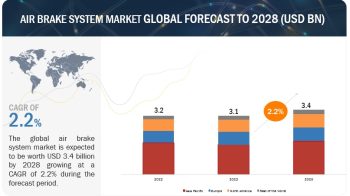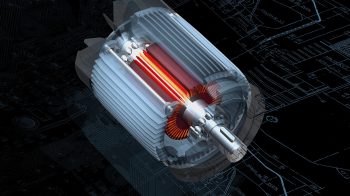
The report “Traction Inverter Market Propulsion Type (BEV, HEV, and PHEV), Output Power Type (<=130 kW and >130 kW), Technology Type (IGBT and MOSFET), Semiconductor Materials Type (GaN, Si, and SiC), by Vehicle Type (PC and CV), and Region – Global Forecast to 2025″, Global Traction Inverter Market is projected to grow at a CAGR of 17.57% from USD 2.5 billion in 2018 to reach USD 7.7 billion by 2025.
The growth of the traction inverter market is influenced by factors such as a rise in stringent emission norms to prevent environmental impact, technological advancements in electric vehicles, increasing subsidies and tax rebates offered by various governments, and growing electric vehicle production.
Download PDF Brochure @ https://www.marketsandmarkets.com/pdfdownloadNew.asp?id=59207794
BEVs: Increased BEV sales and technological advancement in electric vehicles are expected to drive the traction inverter market
The BEV segment is the largest of all the segments of the traction inverter market and is expected to witness significant growth during the forecast period. The increased awareness among OEMs and consumers regarding reducing carbon emissions has driven the growth of the BEV market of vehicle inverters. Moreover, the growing trend of high performance and range coverage extension has created the need for more energy efficient inverters.
Silicon Carbide (SiC): Increasing use of wideband gap semiconductor materials in electric vehicles is expected to drive the SiC-based traction inverter market in future
SiC-based power semiconductor devices are state-of-the-art in high efficiency and high frequency applications. With the advent of the era of electric vehicles, the automotive industry is keen toward opting SiC’s advanced features, in terms of power efficiency at high voltages, high reliability, and flexibility. With respect to these aspects, the SiC devices are much smaller, lighter, and simpler than the silicon devices that were used before. Moreover, SiC-based vehicle inverters help in tremendous size and weight reduction of an inverter compared to other semiconductor devices. These features, thus, drive the SiC-based traction inverter Market.
Request Free Sample Report @ https://www.marketsandmarkets.com/requestsampleNew.asp?id=59207794
Asia Pacific: China is expected to lead the Asia Pacific market
The Asia Pacific region is estimated to be the largest growing traction inverter market. The region comprises some of the fastest developing economies of the world such as China and India. The Asia Pacific region especially China is considered to be technologically more active toward the production of electric vehicles and also houses various key electric vehicle manufacturers such as SAIC, BYD, and Geely. Asia Pacific also houses various key suppliers of vehicle inverters such as Denso (Japan), Mitsubishi Electric Corporation (Japan), and Hitachi (Japan). Factors such as the availability of cheap labor and favorable government policies help undertake the mass production of electric vehicles in Asia Pacific, which results in the lower prices complemented by developed charging infrastructure. Thus, providing growth opportunities to the vehicle inverters’ manufacturers in this region.
Key Market Players:
The global traction inverter market is dominated by major players such as Denso (Japan), Delphi Technologies (UK), Continental AG (Germany), Mitsubishi Electric Corporation (Japan), Toshiba (Japan), and Hitachi (Japan).
Speak to Analyst @ https://www.marketsandmarkets.com/speaktoanalystNew.asp?id=59207794


